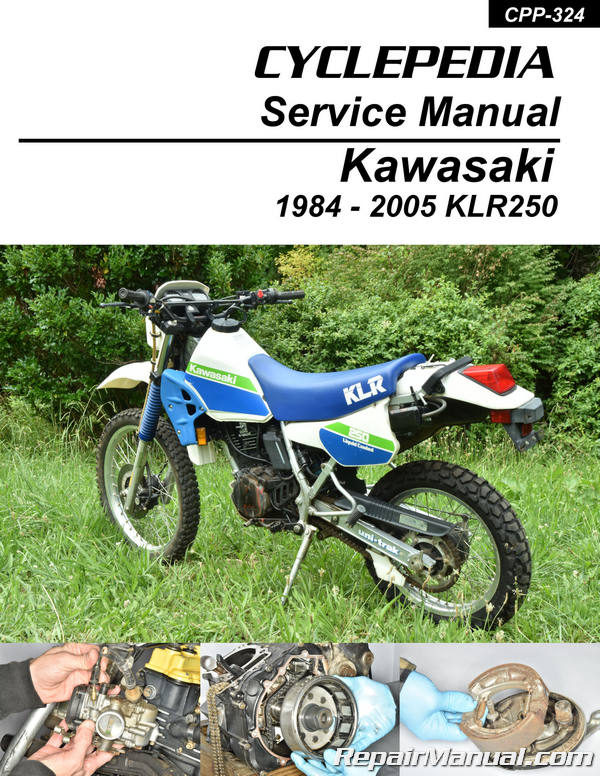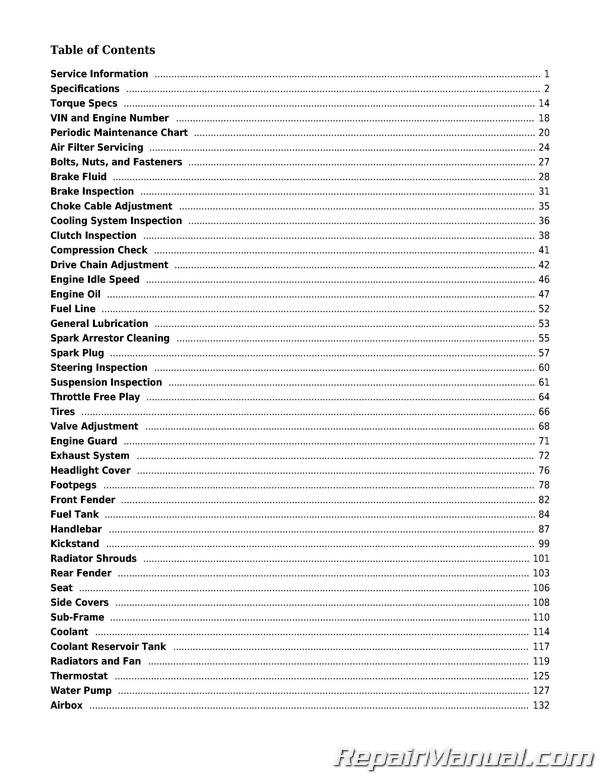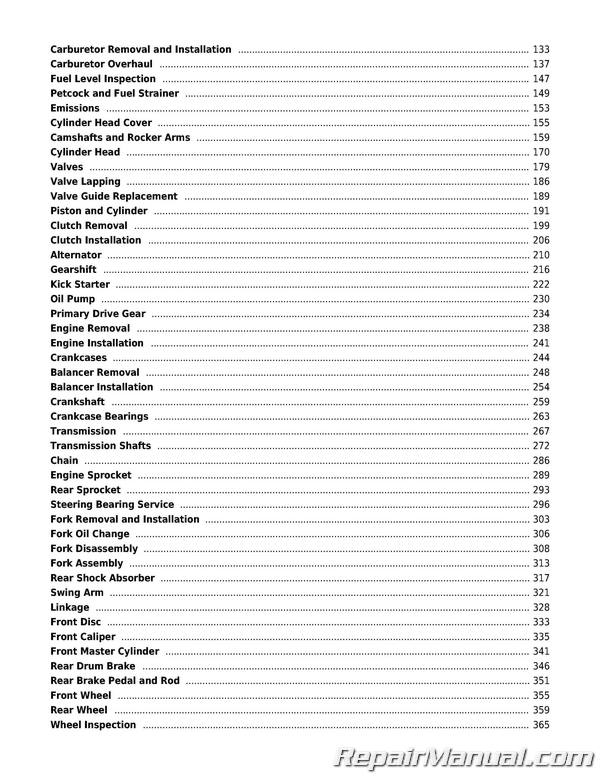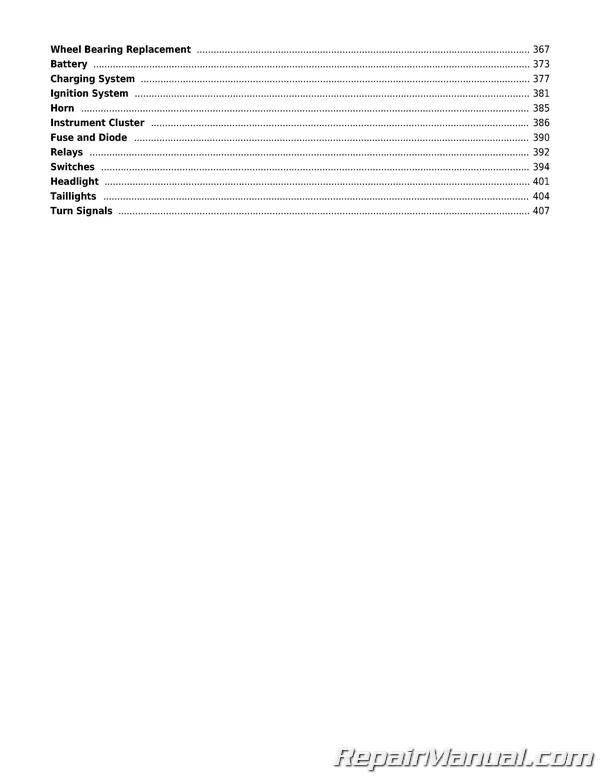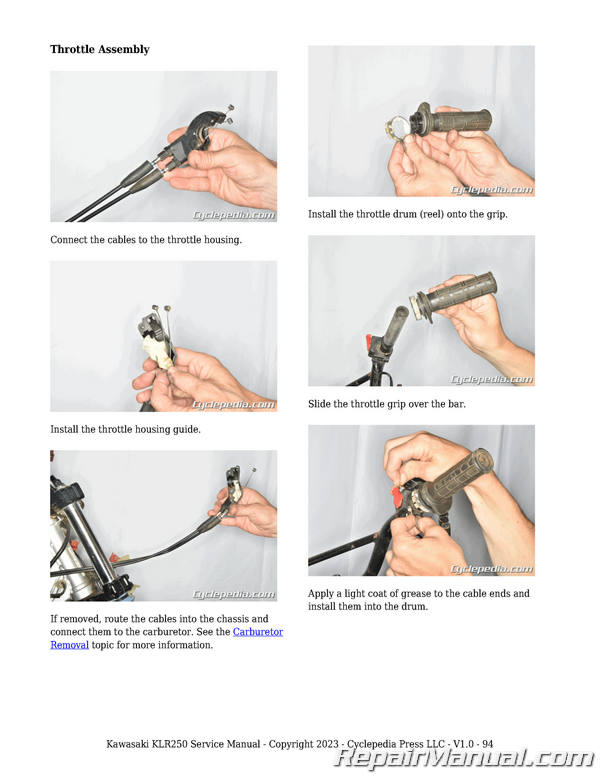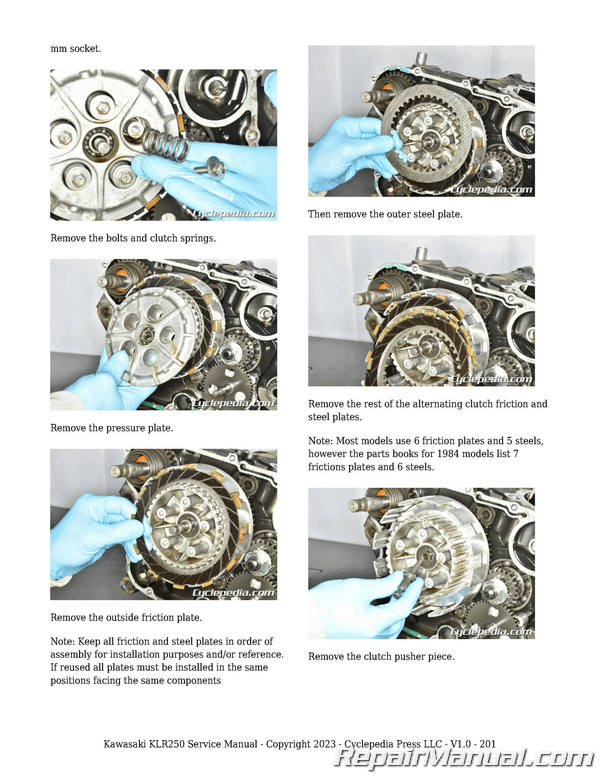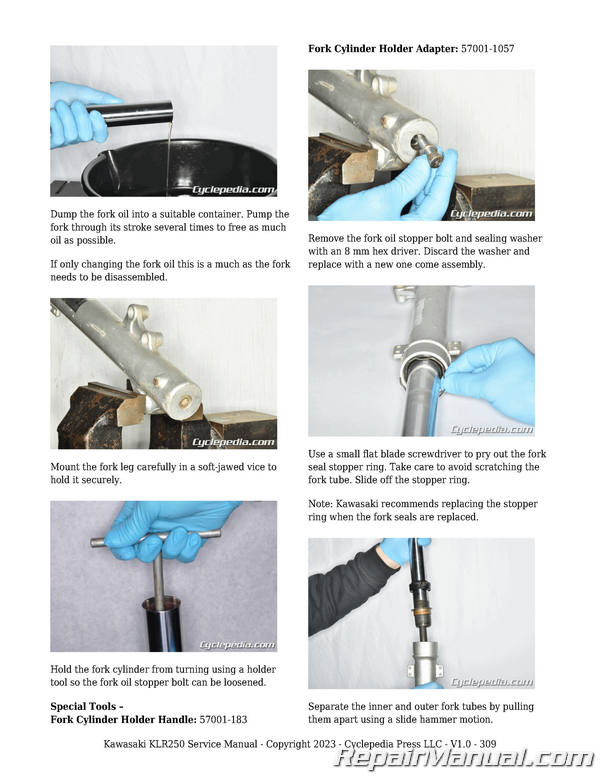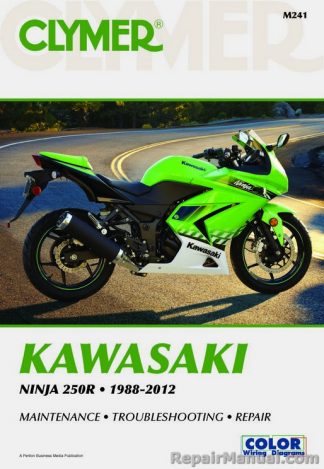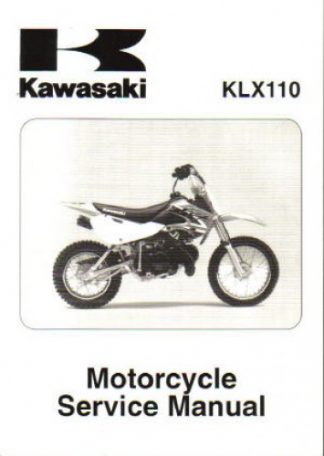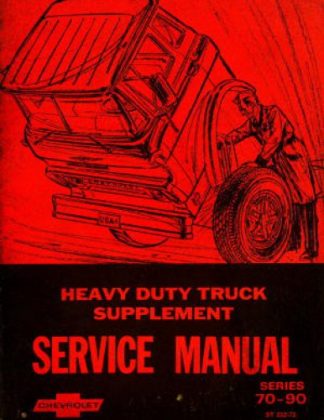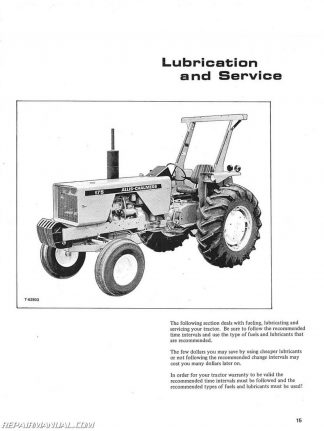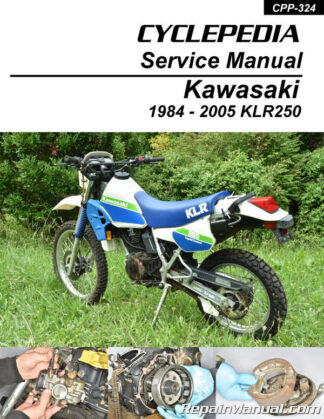Description
Do you need to service your Kawasaki KLR250 dual sport motorcycle? The Kawasaki KLR250 is a lightweight dual-sport motorcycle produced from 1984 to 2005. It features a 249cc, single-cylinder, four-stroke engine known for its reliability and decent fuel efficiency. The KLR250 is praised for its versatility, performing well both on and off-road, making it a popular choice for commuters and adventure riders alike. With a simple design, it is easy to maintain and has a strong aftermarket support, though its performance is modest compared to more modern dual-sport bikes. The Kawasaki KLR250 Service Manual by Cyclepedia Press LLC includes 413 pages of service, repair and maintenance information to help you keep your KLR running great for years to come.
With every purchase of the printed book you also get access to the full-color online version of the Cyclepedia Press LLC Kawasaki KLR250 service manual .
Models Coverage
1984 KL250-C2
1985 KL250-D2
1986 KL250-D3
1987 KL250-D4
1988 KL250-D5
1989 KL250-D6
1990 KL250-D7
1991 KL250-D8
1992 KL250-D9
1993 KL250-D10
1994 KL250-D11
1995 KL250-D12
1996 KL250-D13
1997 KL250-D14
1998 KL250-D15
1999 KL250-D16
2000 KL250-D17
2001 KL250-D18
2002 KL250-D19
2003 KL250-D20
2004 KL250-D21
2005 KL250-D22
Table of Contents
Service Information / Model Coverage
Quick Reference
Specifications
Torque Specs
VIN and Engine Number
Periodic Maintenance
Periodic Maintenance Chart
Air Filter Servicing
Bolts, Nuts, and Fasteners
Brake Fluid
Brake Inspection
Choke Cable Adjustment
Cooling System Inspection
Clutch Inspection
Compression Check
Drive Chain Adjustment
Engine Idle Speed
Engine Oil
Fuel Line
General Lubrication
Spark Arrestor Cleaning
Spark Plug
Steering Inspection
Suspension Inspection
Throttle Free Play
Tires
Valve Adjustment
External Components
Engine Guard
Exhaust System
Headlight Cover
Footpegs
Front Fender
Fuel Tank
Handlebar
Kickstand
Radiator Shrouds
Rear Fender
Seat
Side Covers
Sub-Frame
Cooling System
Coolant
Coolant Reservoir Tank
Radiators and Fan
Thermostat
Water Pump
Fuel System
Airbox
Carburetor Removal and Installation
Carburetor Overhaul
Fuel Level Inspection
Petcock and Fuel Strainer
Emissions
Engine
Cylinder Head Cover
Camshafts and Rocker Arms
Cylinder Head
Valves
Valve Lapping
Valve Guide Replacement
Piston and Cylinder
Clutch Removal
Clutch Installation
Alternator
Gearshift
Kick Starter
Oil Pump
Primary Drive Gear
Engine Removal
Engine Installation
Crankcases
Balancer Removal
Balancer Installation
Crankshaft
Crankcase Bearings
Transmission
Transmission Shafts
Final Drive
Chain
Engine Sprocket
Rear Sprocket
Steering
Steering Bearing Service
Front Suspension
Fork Removal and Installation
Fork Oil Change
Fork Disassembly
Fork Assembly
Rear Suspension
Rear Shock Absorber
Swing Arm
Linkage
Brakes
Front Disc
Front Caliper
Front Master Cylinder
Rear Drum Brake
Rear Brake Pedal and Rod
Wheels
Front Wheel
Rear Wheel
Wheel Inspection
Wheel Bearing Replacement
Electrical Systems
Battery
Charging System
Ignition System
Horn
Instrument Cluster
Fuse and Diode
Relays
Switches
Headlight
Taillights
Turn Signals
KLR 250 Color Wiring Diagrams
In the past, if you wanted to service a KLR 250 motorcycle yourself, you had to buy the Kawasaki Factory Service Manual for a KLR600. The 250 and 600 share many similarities so Kawasaki refers owners to use the 600 manual as a base manual. Any 250 specific information can be found in the 250 supplement manual. So to look up a procedure you would open your 250 supplement manual first and if you couldn’t find the information you were looking for you would find that section in the KLR600 base manual.
The Kawasaki KLR250 is a versatile and reliable dual-sport motorcycle known for its durability and capability both on-road and off-road. While it’s generally considered a reliable bike, some owners have reported certain issues or areas that might need attention.
Oil Consumption: Some riders have reported higher oil consumption. Regularly check the oil levels and perform oil changes at recommended intervals.
Carburetor Tuning: Carburetor-related issues, such as tuning problems or clogged jets, have been reported. Regularly clean and maintain the carburetor for optimal performance.
Electrical System: Over time, electrical components like the battery and wiring may require attention. Check the battery, electrical connections, and lighting systems.
Rust on Exhaust System: The exhaust system may be prone to rust, especially in humid or wet conditions. Regularly inspect and address any rust-related issues.
Suspension Maintenance: The front forks and rear shock should be inspected for leaks and wear. Maintain proper suspension function for on-road and off-road performance.
Chain and Sprockets: Regularly inspect and adjust the chain tension. Replace the chain and sprockets if signs of wear are present.
Brake System: Check the brake pads, brake fluid levels, and ensure the braking system’s reliability. Off-road riding can be demanding on brakes.
Tire Wear: Dual-sport bikes are often used on a variety of terrains, which can accelerate tire wear. Regularly check and replace tires as needed.
Frame and Chassis Integrity: Inspect the frame and chassis for any signs of cracks or damage. Off-road riding can put stress on the bike’s structure.
Fuel System Cleaning: Perform periodic fuel system cleaning to ensure optimal fuel delivery and combustion.
Regular maintenance, along with proactive checks and adjustments, can contribute to a trouble-free riding experience.

